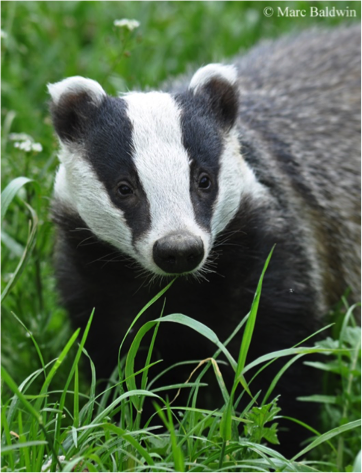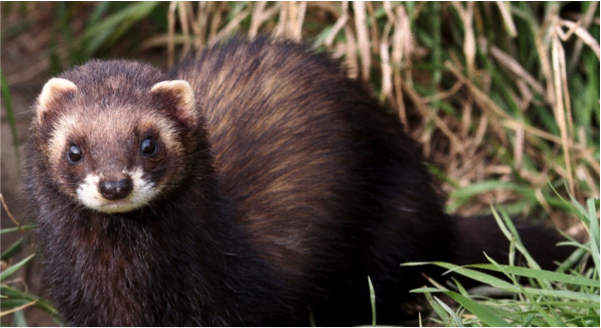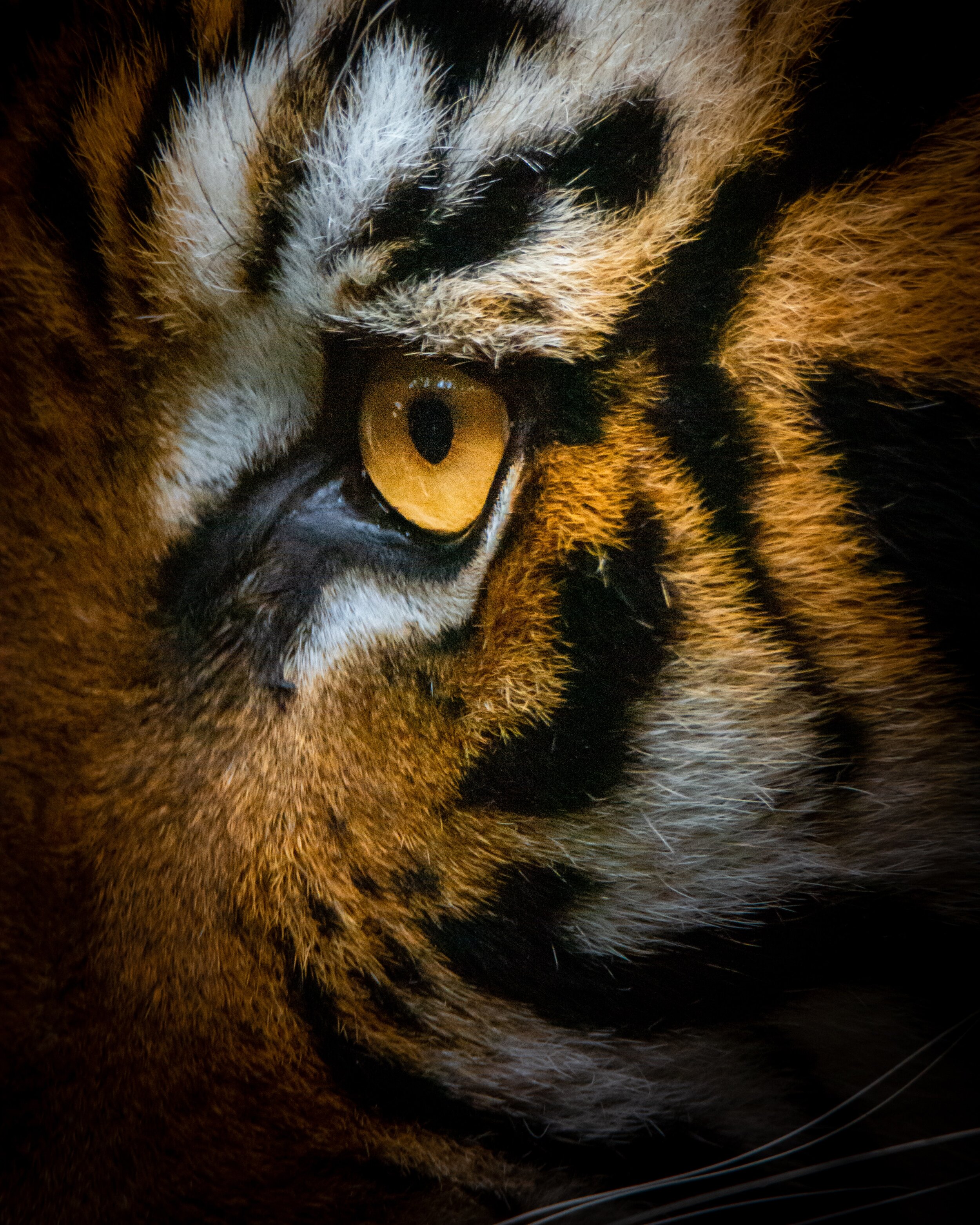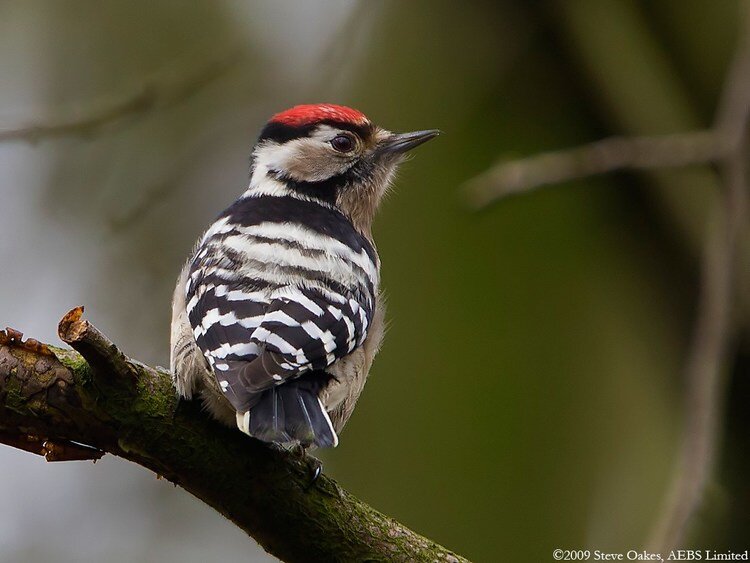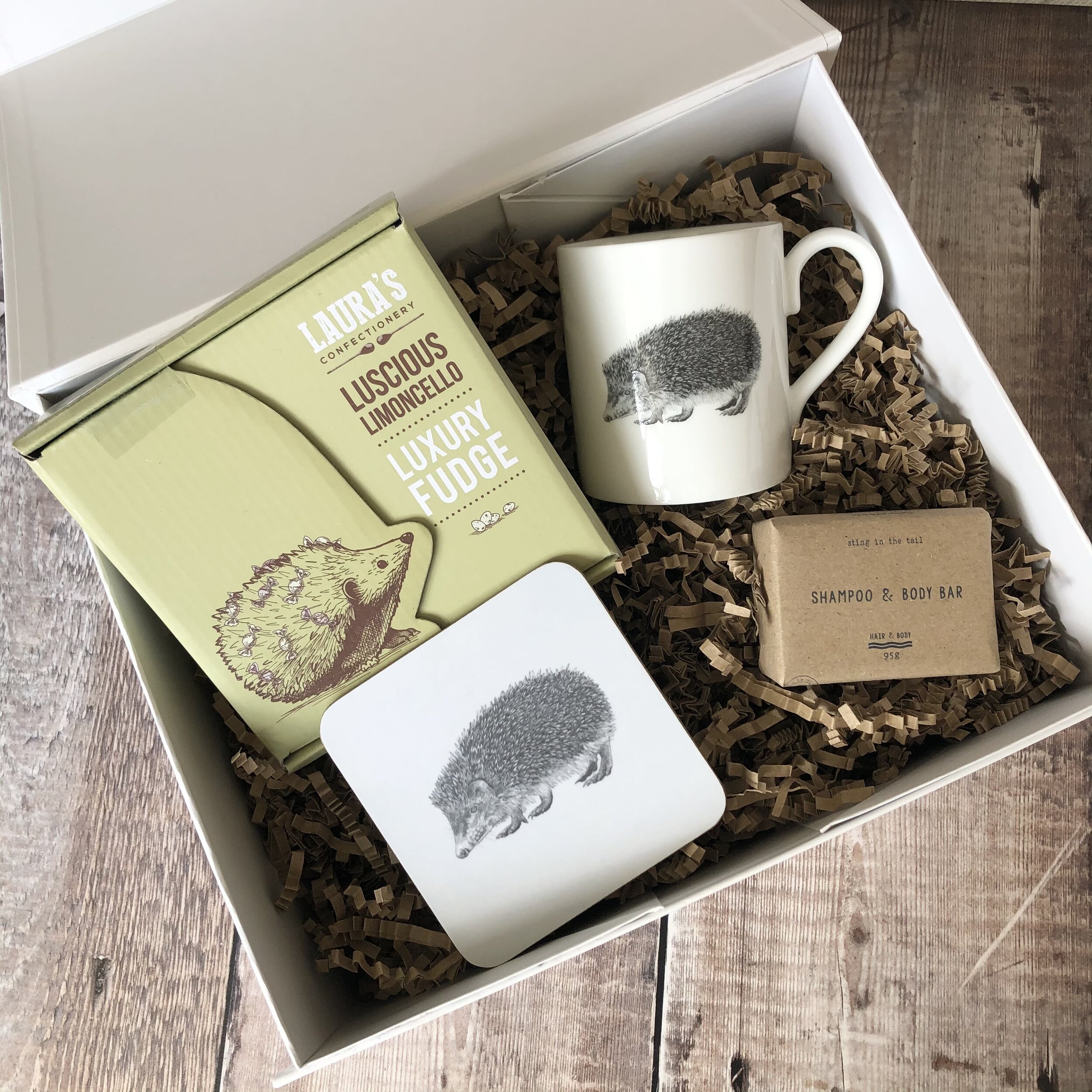By Steph Robertson
What is a Mustelid?
The family Mustelidae comprises 56 – 60 species across 8 subfamilies and 22 genera worldwide. Not only is Mustelidae one of the most species-rich families in the order Carnivora, it is also one of the oldest. Mustelid-like animals first appeared around 40 million years ago, coinciding with the rise of rodents; the modern mustelids’ direct ancestors first appeared around 15 million years ago. The United Kingdom is home to 7 mustelid species, within the subfamilies Melinae, Mustelinae, Guloninae and Lutrinae. Mustelids are known to resemble each other in behaviour, colouring, or build; with all species exhibiting elongated bodies, short legs and scent glands. Many mustelids are opportunistic feeders, whilst others are primarily carnivorous or specialist; they hunt in a variety of terrestrial, arboreal and aquatic habitats.
European Badger (Meles meles)
Head – Body Size: 50 – 90cm
Tail Size: 11 – 20cm
Weight: 11 – 12kg (autumn), 8 – 9kg (spring)
Activity: Mostly crepuscular and nocturnal
With its black-and-white facemask, the European badger is the most recognisable and most common of the United Kingdom’s mustelids, with an estimated population of 562,000. They only moult once a year, beginning in spring and finishing by autumn; there is no seasonal variation in hair density or colouration. Badgers are commonly found in woodlands and fields, living in large groups averaging six adults. Territory boundaries are marked with well-worn paths and shared latrines (toilet areas), with males more likely to mark the territory than females.
Breeding Behaviour
Mating can occur year-round, but typically falls between February and May. Badgers and many other mustelids exhibit delayed implantation, where the fertilised embryo can take up to 10 months to implant in the uterus. Once implanted, badgers have a gestation period of 7 weeks, with 1 – 5 cubs being born mid-January to mid-March.
Feeding Behaviour
Badgers are omnivorous and opportunistic foragers, with earthworms comprising 80% of their diet. They can consume several hundred worms in one night; they grip earthworms using their incisors and will also dig them out of the ground. Badger weights vary throughout the year, dropping to only 8kg in spring; at this point badgers will feed copiously during the spring and summer months. Due to their omnivorous diet, they are also known to take large insects, cereals, fruit and even small mammals such as hedgehogs and rodents.
Dropping Identification
Badger droppings are typically large and firm, but can also be sloppy and wet if they have consumed large amounts of worms! They are dog-like in shape, but distinguishable by their insect remains, sweet musty smell and by their location in shallow pits – also known as latrines.
Track Identification
The most distinguishing feature of a badger footprint is the wide, kidney bean-shaped pad. When walking badgers tend to amble, meaning their footprints should be evenly spaced. They are roughly 3.5 – 4.5cm wide
Fur Identification
Black/white/grey in colour. Rough and triangular to the touch, will not roll smoothly across the palm of the hand.
European Otter (Lutra lutra)
Head – Body Size: 60 – 90cm for males, 59 – 70cm for females
Tail Size: 36 – 47cm
Weight: 6 – 17kg for males, 5 – 12kg for females.
Activity: Nocturnal & diurnal (along coasts)
Otters can be found all year round playing and hunting along riverbanks. Their territories expand over approximately 10 miles of river, where males and females may overlap with individuals protecting their territories against same-sex otters. Other habitats include lakes, ponds, canals and streams; in Scotland, otters are also found inhabiting the coast.
Breeding Behaviour
After a 9-week gestation period, 1 – 5 cubs are born in the spring, with the most common litter size being 2 – 3 cubs. Cubs are born blind and helpless, but fully furred; they open their eyes around 4 to 5 weeks old. Females with cubs may also reduce sprainting to avoid being detected by other individuals.
Feeding Behaviour
Otters are perfectly adapted to a semi-aquatic lifestyle, feeding primarily on fish and frogs. In clear waters, an otter’s vision is just as excellent as it is above water; when water visibility is poor, otters rely on their whiskers to detect prey. Otters are also known to prey on waterfowl, such as moorhens and ducks. Once waters warm up in spring, fish become fast and therefore harder to catch; otters will usually switch to eating frogs, crustaceans and young waterfowl at this time.
Swimming Behaviour
Otters are commonly misidentified as American mink. An easy way to identify a swimming otter is that they swim with the majority of their body submerged, only displaying a head and create a U-shaped wave on the water’s surface.
Dropping Identification
Known as spraints and roughly 2 – 10cm in length, otter droppings are usually left in prominent places to mark out their territories, usually along riverbanks, on rocks or under bridges. They are usually dark green in colour, slimy and are full of fish bones. As they dry out, they turn pale and crumbly. Fresh otter droppings also smell like jasmine tea.
Track Identification
Otter footprints have an elongated foot pad, with a noticeable uneven bulge at the forefront, similar in appearance to a mirror-imaged shape of Africa. Claw marks may also be absent from the footprint, depending on the substrate the print has been formed in. Despite being five-toed, often only four toes appear in an otter print. These large, round prints are 5 – 7cm wide and 6 – 9cm long.
American Mink (Neovison vison)
Head – Body Size: 32 – 47cm for males, 32 – 37cm for females
Tail Size: 13 – 23cm
Weight: 0.8 – 1.8kg for males, 0.45 – 1kg for females.
Activity: Nocturnal & crepuscular
An invasive and non-native species, it is unsure whether American mink individuals escaped or were intentionally freed from UK fur farms in the 1950’s & 1960’s, but they are now well established in the UK. Its carnivorous nature is a threat to the country’s native water vole and seabird populations. Mink can be found along rivers, marshland and coastal areas. Both male and female mink are strictly territorial, females have smaller territories than males’, which can reach up to 6km in length. Mink moult twice a year, once in April and again in September. In spring, whilst the mink’s coat is shedding, it is not waterproof enough, so they dry their coat with the dust of rotten wood. Fur is shorter, less dense and paler than the winter coat.
Breeding Behaviour
During the breeding season in spring, male mink will travel up to 20 miles a day to pursue as many females as possible; despite being incredibly territorial, females tolerate males during this time. Mating occurs in March and April. After mating, females seek out old rabbit warrens or water vole burrows to give birth in during late spring and summer after a 7-week gestation period. Usually, 3 – 6 kits are born in a litter.
Feeding Behaviour
American mink are known to primarily feed on small mammals and birds, but their diet changes in response to otter presence. Mink vision is better in a terrestrial environment, so they commonly hunt on the ground rather than in the water like otters. They rely on their keen sense of smell, which is used to prey on fish, water birds, invertebrates, small mammals and rabbits.
Swimming Behaviour
Commonly misidentified as otters when in the water, American mink are faster swimmers than otters. Another way to distinguish if the animal is an American mink is if you can see the whole length of its back, as mink swim higher in the water than otters. The wave created by their nose is narrow and V-shaped.
Dropping Identification
Known as scats, mink droppings are smaller than an otter spraint (around 8cm long) and are usually black in colour, containing fur, feathers and bones. Mink droppings have a rather unpleasant odour, worse than that of fox droppings.
Track Identification
American mink footprints are remarkably similar to those of a polecat in terms of size and shape. They are around 3 – 3.5cm wide and 2.5 – 4cm long. On harder substrate, mink footprints may splay out, with the pad (plantar) sitting further back. Due to its almost indistinguishable similarity to a polecat print on soft ground, the below image is that of a hard ground print.
Pine Marten (Martes martes)
Head – Body Size: 45 – 58cm for males, 36 – 45cm for females
Tail Size: 16 – 28cm
Weight: 0.6 – 2.2kg for males, 0.5 – 1.2kg for females.
Activity: Mostly Nocturnal & Diurnal
Pine martens are extremely elusive mustelids; they are solitary, secretive animals that are native and common in parts of Scotland but are exceedingly rare in England and Wales. They are known for their incredible arboreal agility. Between April and June, pine martens swap their pale, fluffy winter coat for a darker summer coat which begins to grow out at the nose and finishes at the tail. During spring, scenting glands on adult makes become exposed and waxy
Breeding Behaviour
Every two years, female pine martens give birth to between 1 – 5 kits in March/April. Mothers lactate from March to July; kits will start to leave the nest in July.
Feeding Behaviour
Known to take down squirrels in trees, pine martens usually hunt on the ground where they prey on voles and mice, but also rabbits, small birds, bird eggs, berries and invertebrates. Females with cubs will increase their foraging in spring, especially in well-covered forests where they will prey on passerines and their eggs.
Dropping Identification
Around 4 – 12cm in length, pine marten droppings are long, thin, coiled and tapered in shape; often full of fur, bone, feathers and pieces of leaves/grass. In summer scat can gain a blue tinge, as bilberries comprise 30% of a pine marten’s diet during this season. Pine marten droppings also have a distinctive scent; it is musky, sweet and fruity sometimes being compared to damp hay or Parma violets. This is one of the key features for distinguishing scat from fox droppings. These scats are usually left in prominent places
Track Identification
Tracks can be easily confused with polecat and mink as they are also five-toed and of similar size. They are typically 4cm wide by 4.5cm long in females and 5.5cm wide by 6.5cm long in males. Pine martens have a stride length of 50 – 80cm.
European Polecat (Mustela putorius)
Head – Body Size: 30 – 46cm for males, 28 – 38cm for females
Tail Size: 7 – 15cm
Weight: 0.5 – 1.5kg for males, 0.4 – 0.8kg for females.
Activity: Nocturnal
Native and common locally throughout the UK, the European polecat inhabits woodlands, grasslands, farmland and river valleys. Polecats are less territorial than other mustelids, mostly due to a lifestyle of constantly foraging for available food. Territories are therefore very dependent on seasonal food availability, but will overlap between sexes in spring. Twice a year polecats moult. In spring they shed their fluffy, paler winter coat to make way for shorter, darker hair. European polecats are closely related to the domesticated ferret and can hybridise, creating polecat-ferret offspring.
Breeding Behaviour
Polecats have a 40 – 43-day gestation period, after which 5 – 10 kits are born, usually in late May to early July. Kits are born blind and hairless.
Feeding Behaviour
European polecats feed on rabbits, small mammals and frogs; they will also take bird eggs and invertebrates. In winter, a decreased availability of frogs and rabbits leads to polecats consuming greater numbers of rats to sustain them.
Dropping Identification
Polecat droppings display the twisted appearance found in most mustelid droppings. They are similar in shape to American mink droppings, but do not contain fish remains. They are black in colour, around 6 – 8cm long by 1cm thick and have a rather foul smell, similar to foetid meat.
Track Identification
Compared to other small mustelids, the footprint of a polecat has an elongated shape, with the heel/plantar occupying a more central position, rather than sitting further back. They are roughly 3 – 3.5cm wide and 2.5 – 4cm long.
Stoat (Mustela erminea)
Head – Body Size: 27.5 – 31.2cm for males, 24.2 – 29.2cm for females
Tail Size: 9.5 – 14cm
Weight: 0.2 – 0.45kg for males, 0.14 – 0.28kg for females.
Activity: Nocturnal & Diurnal
A common and widespread species throughout the UK, stoats can be found in a variety of landscapes such as grasslands, woodlands and farmlands. Throughout the year, both males and females mark their territory using scent glands. Stoats typically travel along ditches, hedges and covered areas in order to avoid predation. Stoats moult twice a year, once in autumn and again in spring. Their winter pelage is entirely white, except for the black tip of their tail (this coat change is more common in individuals found in Scotland and northern parts of England). The white fur acts as camouflage to avoid predation, bit the tip remains black. Moult progress is controlled by day length. Males leave their territories in spring in search of females.
Breeding Behaviour
Stoats breed once a year, mating during the summer and, after experience delayed implantation, will have 5 – 12 kits, born deaf, blind and furless in the following April – May. They will be fed for up to 12 weeks by the female.
Feeding Behaviour
As spring approaches, stoats become more active during the day than they are in autumn. They tend to feed on higher numbers of lagomorphs (rabbits) in the spring. Prey typically consists of rabbits and small mammals, but bird, bird eggs, fish and insects also comprise their diet.
Dropping Identification
Stoat droppings are longer and thicker than weasel droppings, about 4 – 8cm long by 0.5cm thick. They often contain hair and bone debris and are a black/brown colour; they give off a musky smell, but one that is not too unpleasant.
Track Identification
Stoat tracks are similar to those of a weasel, but are usually larger in size, 2cm wide by 2.2cm long. Footprints are usually found in mud or snow.
Weasel (Mustela nivalis)
Head – Body Size: 19.4 – 21.7cm for males, 13.7 – 18.3cm for females
Tail Size: 3.4 – 5.2cm
Weight: 0.1 – 0.13kg for males, 0.05 – 0.07kg for females.
Activity: Mostly Diurnal
Like the stoat, weasels are common and widespread across the UK. Weasels are found in grasslands, woodlands and farmlands. They are the smallest carnivores in the world (the largest, the polar bear, weighs over 5,000x more). Weasels are often mistaken for stoats, but a key feature to look out for is the weasel sports a far shorter tail and there is no black tip at the end, unlike the stoat. Their fur becomes slightly darker in the spring. Both male and female weasels are territorial, but males will extend their range during the spring in search of a mate.
Breeding Behaviour
Weasels breed from April to August. Mothers will use old mouse or vole burrows as a den, lining the nest with hay. Weasels typically have 4-6 kits once a year; if field voles are abundant it can be twice a year. Young are weaned after 3-4 weeks and can efficiently kill at 8 weeks of age.
Feeding Behaviour
A weasel’s diet primarily consists of mice and voles, their bodies enabling them to search through tunnels and runways of mice and voles. Access to these tunnels means weasels can hunt at any time of the day or year. They can even hunt under deep snow. Additionally, weasels will predate small rabbits, small birds and their eggs, particularly if rodents are scarce. They have been known to travel up to 2.5km on hunting expeditions; in spring they take advantage of the abundance of amphibians and bird eggs.
Dropping Identification
Weasel droppings are brown/black in colour and often contain bits of bone and hair. They are shorter and thinner than stoat droppings, measuring 3-6cm long by 0.2cm thick.
Track Identification
Weasels have the smallest footprints of any carnivore, a distinguishing feature, measuring 1cm wide by 1.3cm long. The heel/plantar should be a simple shape but can have a possible further depression after the heel.
Take a look at our British Mustelid ranges below!
10% of the purchase price of badger products is donated to The Mammal Society.
10% of the purchase price of otter products is donated to the International Otter Survival Fund.

